Back to the list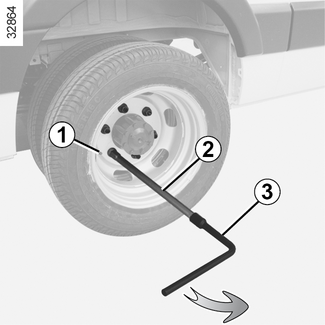
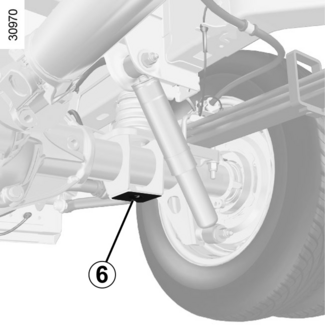
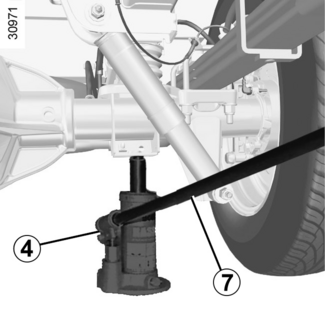
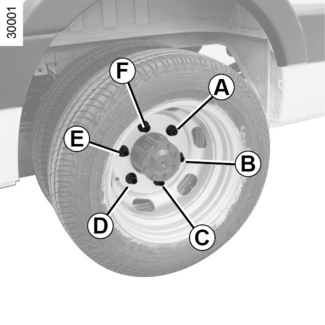
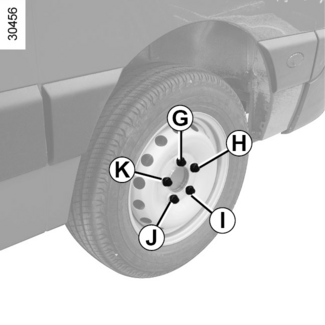
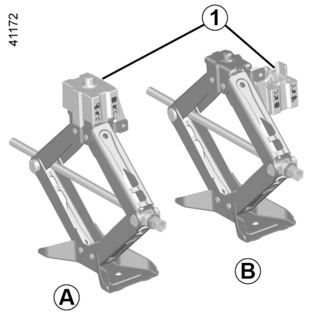
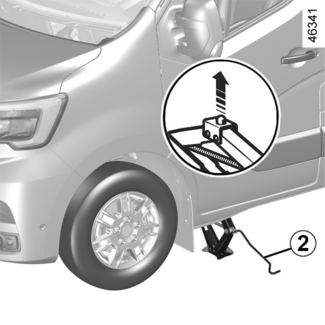
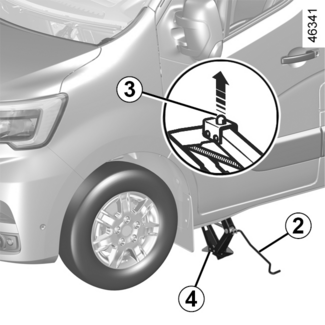
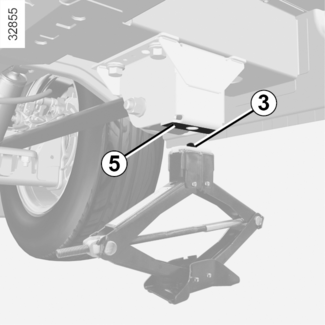
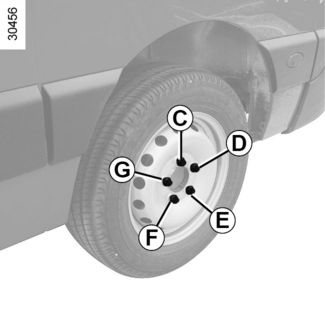
Changing a wheel
Changing a wheel
WARNING
If the vehicle is parked on the hard shoulder, you must warn other road users of your
vehicle's presence with a warning triangle or with other devices as per the legislation
applying to the country you are in.
WARNING
Switch on the hazard warning lights.
Keep the vehicle away from traffic and on a level surface where it will not slip.
Apply the parking brake and engage a gear (first or reverse, or D, M or R position on a sequential gearbox).
Ask the passengers to leave the vehicle and to keep away from traffic.
WARNING
To prevent any risk of injury or damage to the vehicle, only crank the jack until
the wheel you are replacing is a maximum of 3 centimetres off the ground.
Hydraulic jack

When removing dual wheels, unscrew inflating extension piece 1.
Do not forget to reattach it when refitting.
When removing dual wheels, unscrew inflating extension piece 3 extended using the hexagonal extension piece 2 (supplied in the tool kit) and pressing down.
Tip
Anti-theft bolt
If you use anti-theft bolts, fit these nearest the valve (wheel embellisher may not
be able to fit).

Remove the jack 3 located in the tool kit. Familiarise yourself with the jack arrangement prior to
using it.
Using the jack
Position the head of the jack against the contact point 2 close to the wheel concerned.
Position the jack 3 horizontally. The head of the jack must line up with the point 2 provided.

Start pumping using the three extension pieces 4 placed end to end, available in the tool kit TOOL KIT.
Free the wheel from the ground.
Note: using the three extension pieces 4 means that you can avoid going underneath the vehicle to use the jack 3 when raising the vehicle.
Remove the screws, then remove the wheel (take off the central wheel trim if necessary).
Fit the emergency spare wheel on the central hub and, depending on the vehicle, turn
it to align the mounting holes in the wheel and the hub.
If bolts are supplied with the emergency spare wheel, only use these bolts for the
emergency spare wheel.

Tighten the nuts and lower the jack.
With the wheel on the ground, tighten the bolts completely, following the order of
tightening below:
Wheel with six holes: start with bolt A, then D, B, E, C and end with F.

Wheel with five holes: start with bolt G, then J, H, K, and end with I.
Have the tightening and the pressure of the spare wheel checked as soon as possible.
Jack

Vehicle equipped with a jack with a heightener
When changing a front wheel, use the heightener 1 (figure A).
When changing a rear wheel, remove the heightener 1 (figure B).

If necessary, remove the wheel trim.
Unlock the wheel bolts using the wheel brace 2. Position it so as to be able to push from above.

Position the jack 4 horizontally. The jack head 3must be positioned level with the reinforcement panel closest to the wheel in question
or the contact points 5;
start cranking the jack up by hand to align the base plate (which should be pushed
slightly under the vehicle).
Turn the handle a few times using the wheelbrace 2 until the wheel comes off the ground, remove the bolts and remove the wheel;
fit the emergency spare wheel on the central hub and turn it to locate the mounting
holes in the wheel and the hub.

If bolts are supplied with the emergency spare wheel, only use these bolts for the
emergency spare wheel. Tighten the bolts, checking that the wheel is correctly positioned
on its hub and unscrew the jack.
Note: do not lubricate the wheel bolts.
Tip
Anti-theft bolt
If you use anti-theft bolts, fit these nearest the valve (wheel embellisher may not
be able to fit).

With the wheel on the ground, tighten the bolts with force, starting with side C, then E, G, D and end with F. Check the tightness and tyre pressure on the emergency spare wheel as soon as possible.
WARNING
If you have a puncture, replace the wheel as soon as possible.
A tyre which has been punctured should always be inspected (and repaired, where possible)
by a specialist.